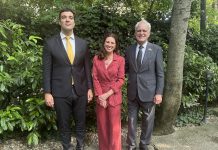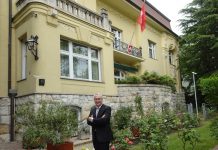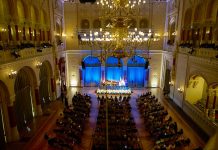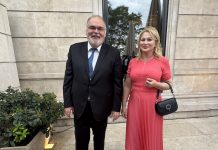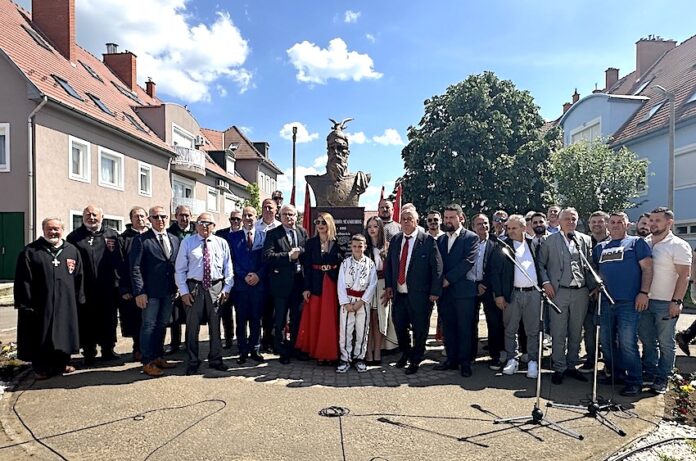“I did not bring you freedom. I found it here among you” – Skanderbeg
Edited by Anna Popper
Over time, numerous historical encounters between Albanians and Hungarians have been documented. While some of these episodes have faded from memory, others remain vivid in the collective consciousness or have been unearthed by historians. Among these historical connections, the enduring bond between Skanderbeg (Gjergj Kastrioti) and János (John) Hunyadi stands as a formidable pillar in the shared history of Albania and Hungary.
Skanderbeg – a descendant of the House of Kastrioti, an Albanian noble family that ruled the Principality of Kastrioti, and János Hunyadi – a leading Hungarian military and political figure in the Kingdom of Hungary, were prominent in the 15th century. Skanderbeg (1405-1468) allied with Hunyadi (1407-1456) in their fight against the Ottoman Empire’s expansion into the Balkans. These two legendary leaders are considered as the shields of European civilization.
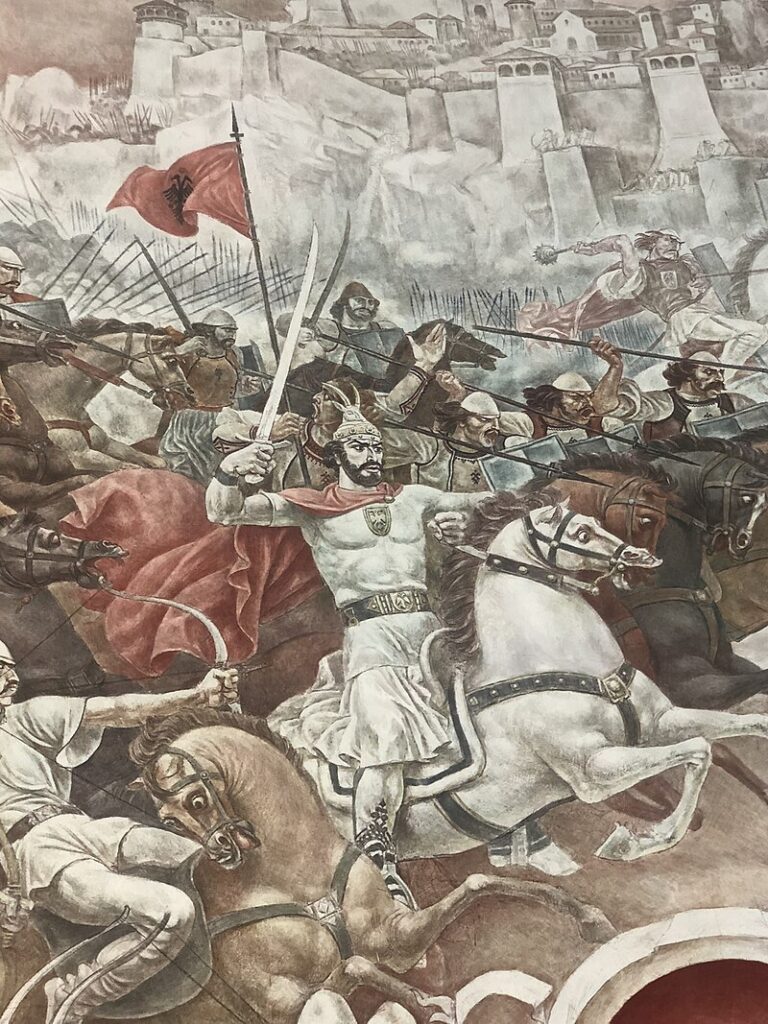
Skanderbeg, also known as the “Dragon of Albania”, revered as the national hero of Albania, epitomizes courage, resilience and unwavering patriotism in Albanian history and culture. His legacy as a valiant military commander who fiercely resisted Ottoman conquest thanks to his strategic brilliance was never defeated by the Ottomans in the 15th century. He united all previously separated Albanian principalities against the Ottoman invasion, laid the foundation for the formation of a medieval Albanian state, and played a crucial role in shaping Albanian identity.
Though raised in Turkey, rejecting the Islam of his youth, Skanderbeg presented himself as a Christian bulwark against Islam and remained loyal to Albania until his death. His long triumphant reign and 25-year resistance against the Ottoman army are well known in world history. As Chief of the League of Lezhë, Skanderbeg led his army to victory in 25 battles against the vastly superior Ottoman Empire.
Pope Calixtus III provided funds for the Albanian campaigns and, after some impressive victories, named Skanderbeg Captain General of the Holy See. With his military successes, Skanderbeg earned respect and recognition in European countries during his lifetime. As a great and esteemed leader, he continues to inspire people to this day. “On the battlefield you will lead the army as generals, but you will fight as soldiers…” – it was Skanderbeg’s leadership philosophy and moral code.
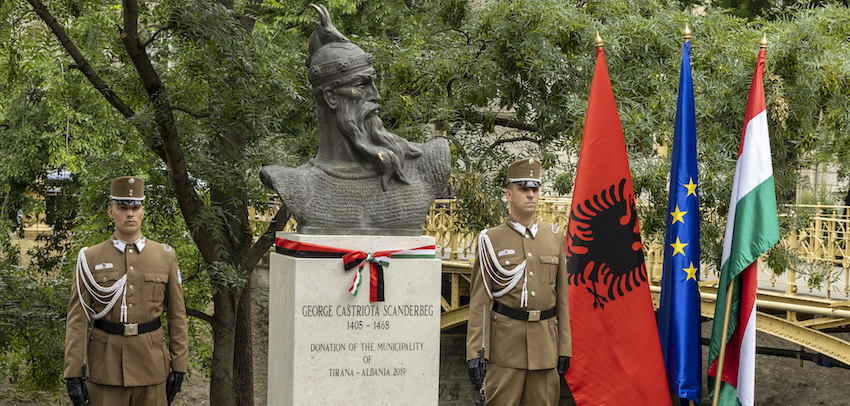
Inspired by the Skanderbeg statue in Budapest City Park, unveiled in 2021, Mr. Avnija Hafuzi, the Honorary Consul of Albania in Hungary, resolved to fulfil his long-held aspiration and dream: to offer a bust to the Hungarian city of Eger, which is renowned for its historic valour, notably its triumphant resistance against the huge Ottoman army in 1552.
Mr. Hafuzi embarked on the project with fervour and substantial financial backing, determined to see his idea come to fruition. Through his tireless efforts, his vision became reality. On 4 May 2024, the bust of Skanderbeg, crafted by the esteemed Albanian sculptor Agim Rada, was unveiled in a solemn atmosphere on Eger Square, now proudly named after this eminent figure of Albanian history.
At the invitation of Mr. Hafuzi, numerous Hungarian and foreign guests from Albania, Kosovo and Austria attended this historically significant event in Eger, namely:
Mr. Genti Bendo, Chargé d’Affaires of the Embassy of Albania in Hungary; Mr. Naser Idrizi, Chargé d’Affaires of the Embassy of Kosovo in Hungary; Bekim Halilaj, Lieutenant Colonel, Police Attaché of the Kosovo Embassy in Vienna; Mr. Szimeon Varga, the Bulgarian advocate of the Hungarian Parliament and his wife; Mrs. Bettina Kecsmár, Western Balkan Department of the Hungarian Ministry of Foreign Affairs and Trade, responsible for Albania and Kosovo; Mr. Gábor Minczér, Deputy Mayor of Eger; Mr. Attila Farkas, Deputy Mayor;

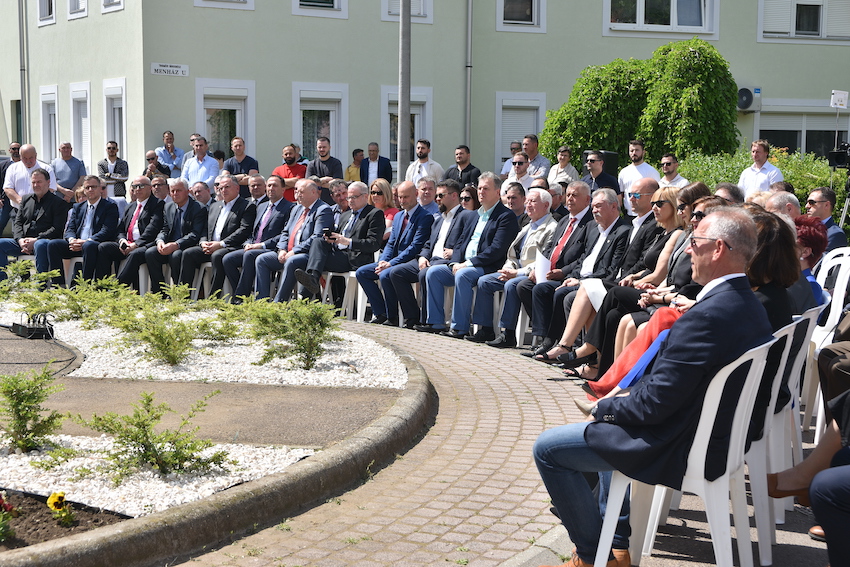
A delegation from Peja, the twin town of Eger: Nuran Muhadjeri – wife of the mayor of Peja; Mirtye Muhadjeri – daughter of the mayor of Peja; Mrs. Djenet Kelmendi, Director responsible for Youth, Sports and Culture; Mrs. lmaze Süla, consultant;
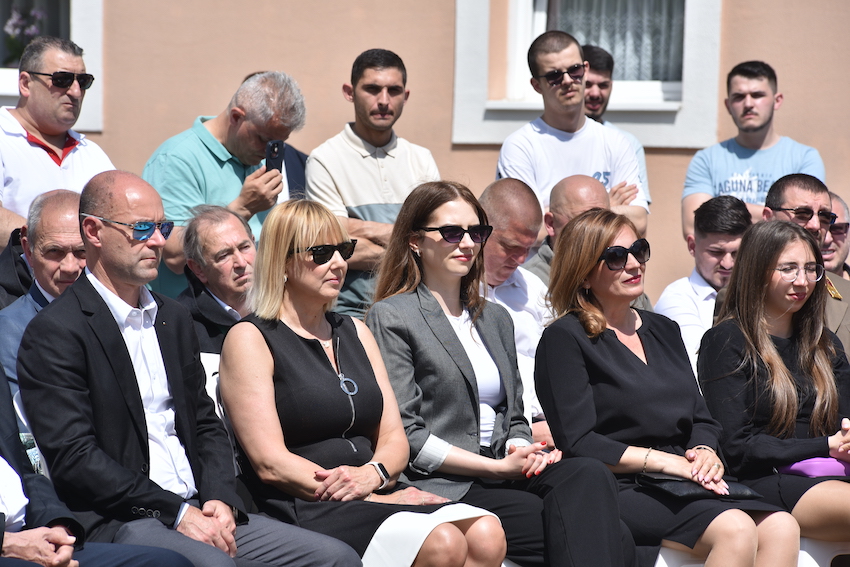
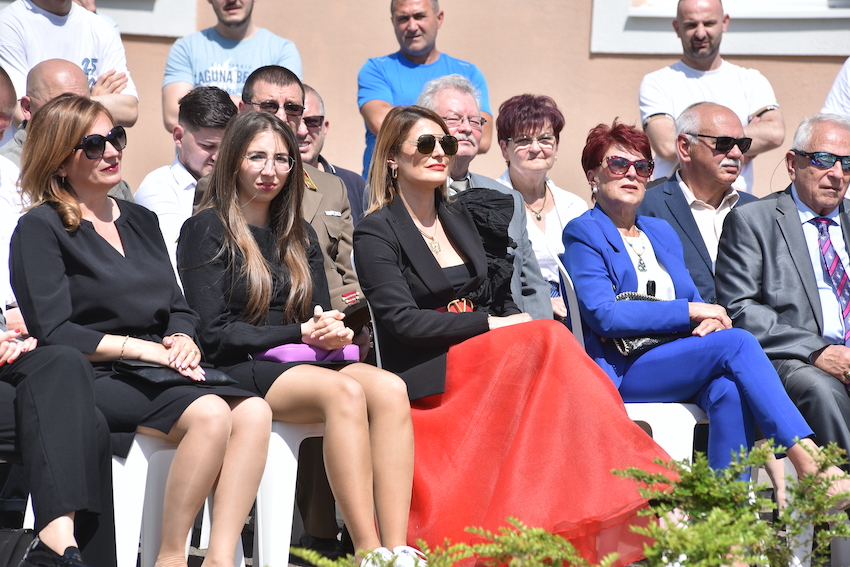
Mr. Bertalan Farkas, first Hungarian astronaut, space explorer; Dr. József Bencze, retired ambassador, retired police officer; Prof. George Popper, Lieutenant General, Prime Minister of the Order of Saint John of Jerusalem, Knights of Malta – KMFAP and his wife; Mr. Mihály Bók, Founder and Chief Adviser to the President of VJASZSZ; Mr. Mihály Gróf Gál, fine art painter; Mr. Erik Molnár, president of O.C.E.C.C.D. and his wife; Dr. Jordan Bocskov, Honorary Consul of the Republic of Bulgaria in Hungary; Fellow Knights of the Order of St. George from Visegrád, Dr. Ottó Csámpai from the southern region and Knights of Heves county; Prof. Dr. Flamur Gashi from Albania, a career diplomat; Dr. Durgut Aliu from Bujanoc, Preševo Valley; Prof. Abdurrahman Zulfiu from Preševo, former history teacher at Skanderbeg High School; Dr. Dasnim Hebibi from Preševo, Doctor of Political Science; Mr. Imeri Luigy from Kosovo, Energy expert, former CEO of the Kosovo Energy Corporation; Mr. Uke Halilaj from Austria and his friends; Friends from Preševo, Mr. Hafuzi’s hometown; Friends from Albania and Kosovo; Hungarian friends and members of the Albanian diaspora in Hungary; Éra Cocaj and Ledri Cocaj, dressed in Albanian national costume, honouring the celebration.
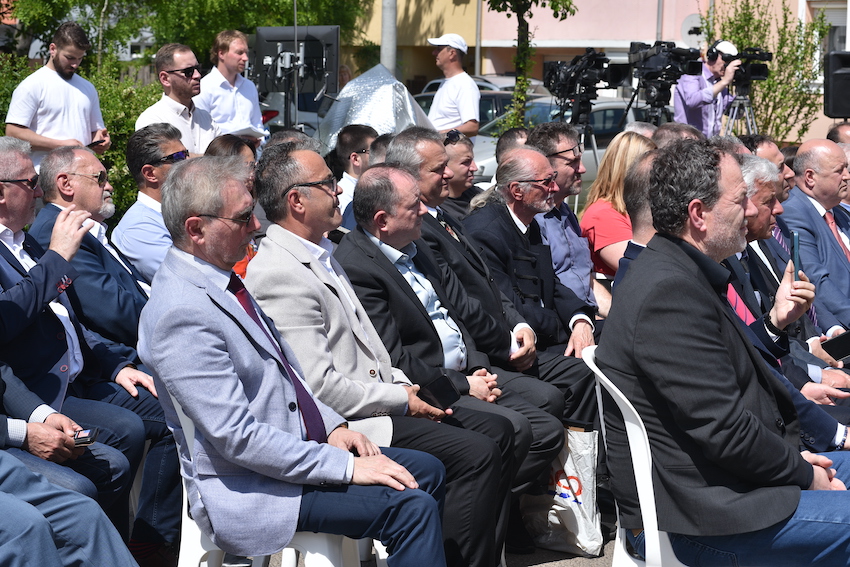
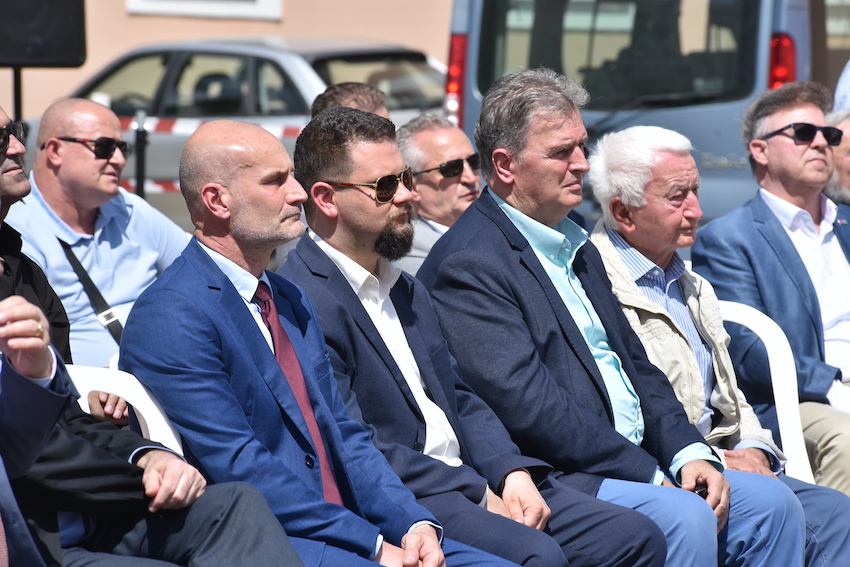
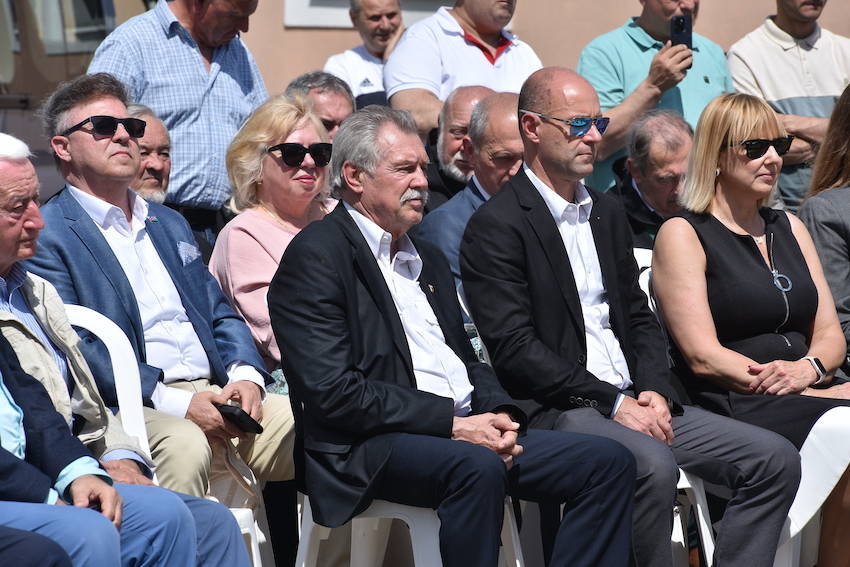
The event commenced with the Albanian and Hungarian anthems,
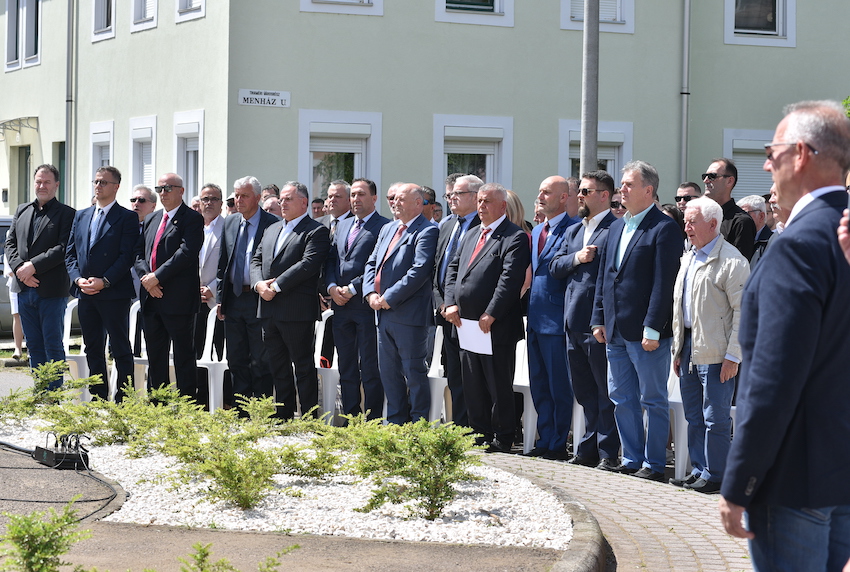
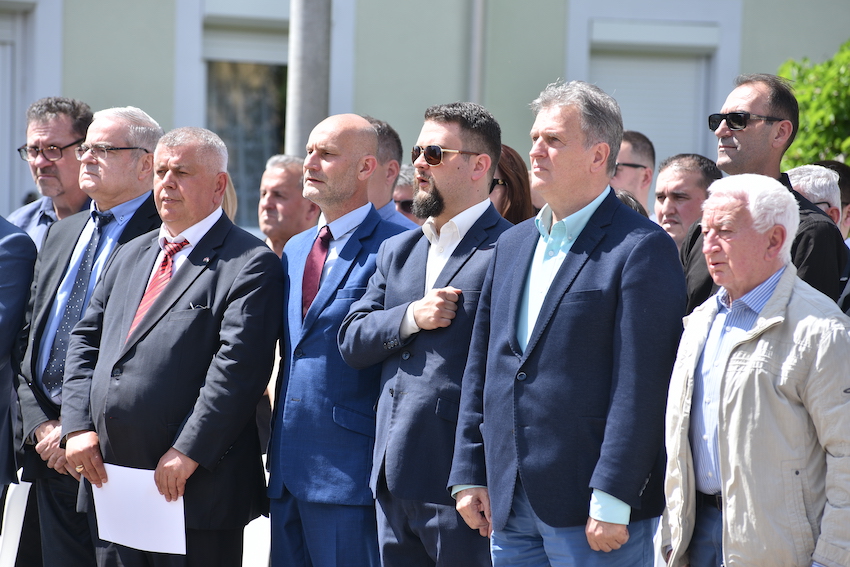
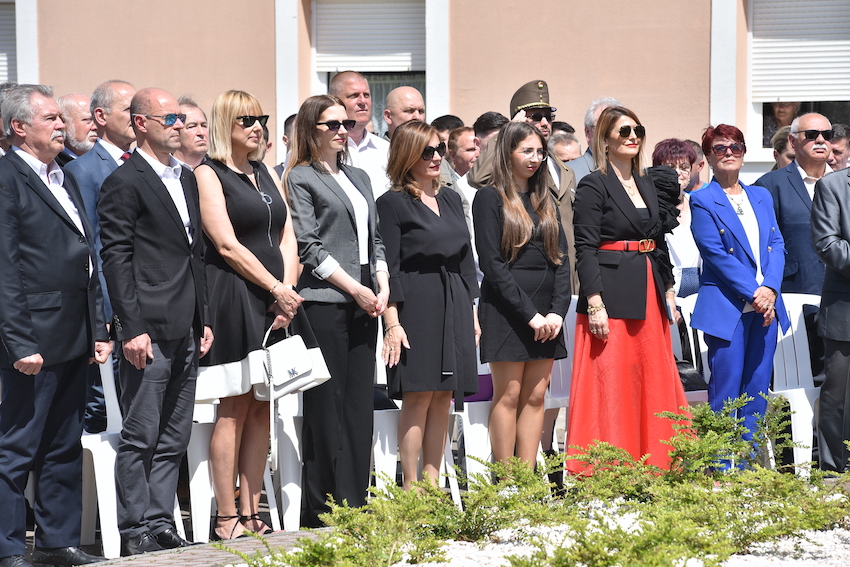
and followed by the Speaker’s welcome on this auspicious occasion:

“On behalf of Mr. Avnija Hafuzi, Honorary Consul of Albania, and Mr. Genti Bendo, Chargé d’Affaires of the Embassy of the Republic of Albania in Budapest, I extend a warm greeting to everyone gathered here at Skanderbeg Square in Eger.
We are deeply grateful for your presence as we gather for a momentous event: the official handover of the bust of Albania’s greatest hero, Gjergj Kastrioti, known as Skanderbeg, to the Municipality of Eger County. This endeavour, which is close to the heart of Honorary Consul Hafuzi, is the culmination of a dream and an idea that is now becoming a reality.
We extend our sincere appreciation to the leaders of this city, whose dedication and contributions made today’s event possible. On the occasion of Skanderbeg’s birthday on the 6th May 1405, Honorary Consul Avnija Hafuzi envisioned the inauguration of this bust as a tribute to the enduring legacy of this Albanian hero.”
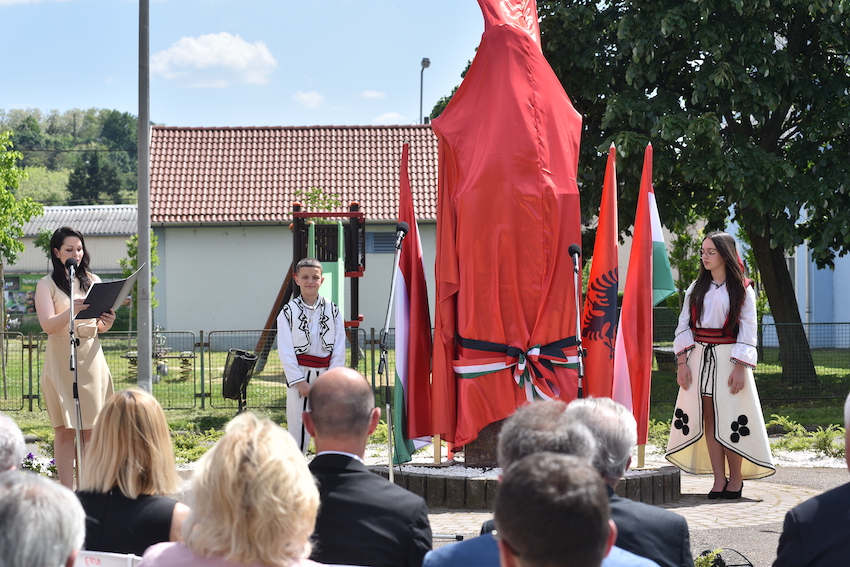
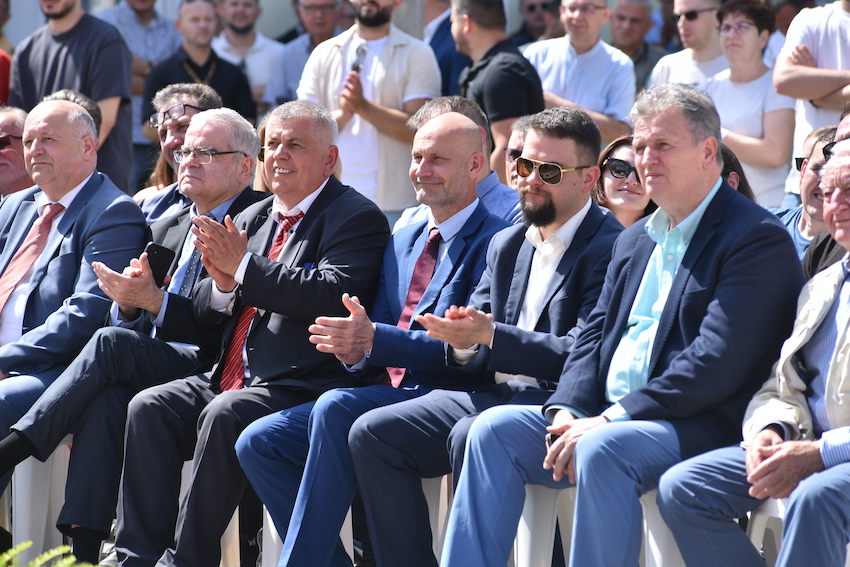
Now, without further ado, I invite Mr. Avnija Hafuzi, Honorary Consul of Albania in Hungary to address the audience and share his thoughts on this momentous occasion:

“Ladies and Gentlemen, I warmly welcome all of you on this solemn day as we mark a significant milestone in the history of Eger. It fills me with profound happiness and a sense of great honour to stand before you as an Albanian, son of Presheva, from my beloved homeland of Albania, and to witness the realization of a long-standing dream – the unveiling of the bust of the courageous hero, Skander Beg, in this beautiful city.
A monument that proudly proclaims the cherished memories of the past and the unwavering hope for the future. It honours a personality who stood as an ally alongside the legendary Hungarian General János Hunyadi, embodying courage and unity. This tribute is not only a testament to history, but also a symbol of the enduring bond between Albania and Hungary, which I hold dear as my second homeland.
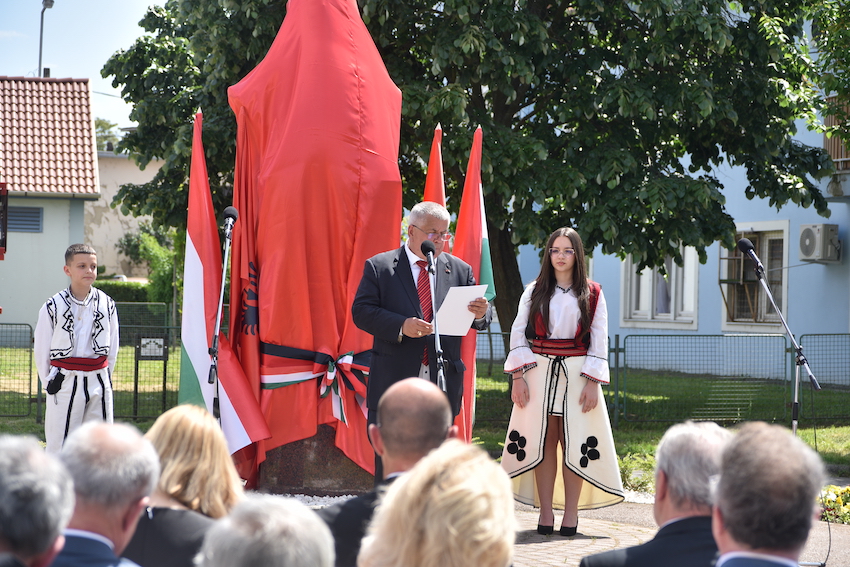
George Kastrioti, known as Skanderbeg, holds a revered place in history for his brave leadership of the Albanian people against Ottoman armies, preventing the occupation of Albanian territories while defending European civilization and Christianity. On 2 March 1444, at the Assembly of Lezhë, he orchestrated the first political alliance of the Albanian principalities and became the chief of the League of Lezhë, paving the way for the creation of a medieval Albanian state. The Albanian alliance defeated the vastly superior Ottoman Empire in 25 battles.
The history of Skanderbeg Square, where we are now gathered, began on my initiative, supported by the former Albanian Ambassador to Hungary, H.E. Alorim Resuli, and officially communicated to the then Albanian Foreign Minister. This led to a ceremony on 12 February 2000, where the then Albanian President, Mr. Rexhep Mejdani, together with the then Hungarian minister, Dr. József Torgyán, and Mr. Alorim Resuli, inaugurated Skanderbeg Square and the memorial erected for this purpose. In addition, as Honorary Consul of Albania, in collaboration with the Albanian Embassy in Budapest, I have held commemorative ceremonies in this area to mark the anniversary of Skanderbeg’s death and the historic Treaty of Lezhë, commonly known as the Albanian League, established on 2 March 1444.
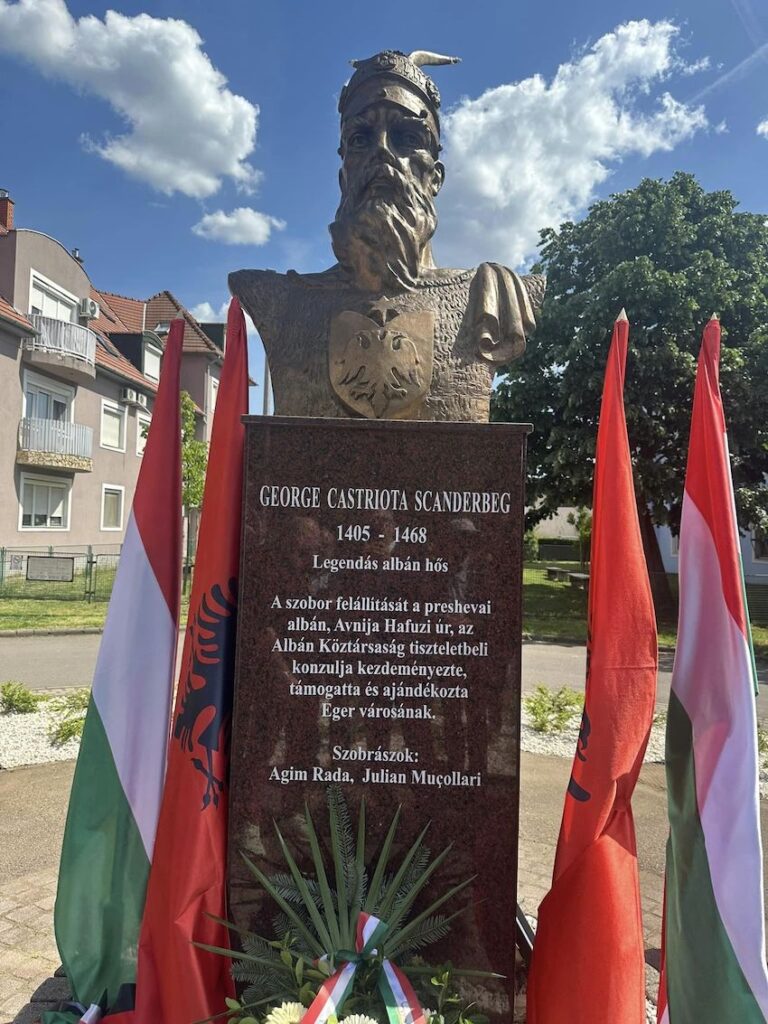
This bust that we are unveiling today was initiated entirely by me, with the generous support of my wife and our five children: three daughters and two sons. I must also acknowledge the significant help and support of the Eger County Municipality, Mayor Ádám Mirkóczki, Deputy Mayor Attila Farkas, the Board of Representatives of the Municipality and their devoted colleagues. Their assistance included the unanimous approval of the representative body for the placement of the bust and the acquisition of the necessary permits.
It is worth mentioning that I also initiated the establishment of a twin-town relationship between the Municipality of Eger and the Municipality of Kruja, the birthplace of Skanderbeg. The medieval town is closely linked to the 25-year activity of the Albanian national hero. In the 15th century, he turned Kruja, with its huge hilltop castle, into a bastion of uncompromising resistance against the Ottomans.
The inauguration of this magnificent bust on the eve of Skanderbeg’s birthday on 6 May in this beautiful area of Eger – a city known for its hospitality, like all of Hungary – contributes to the further strengthening of the ancient friendship between our two peoples and fostering the cooperation between our governments.
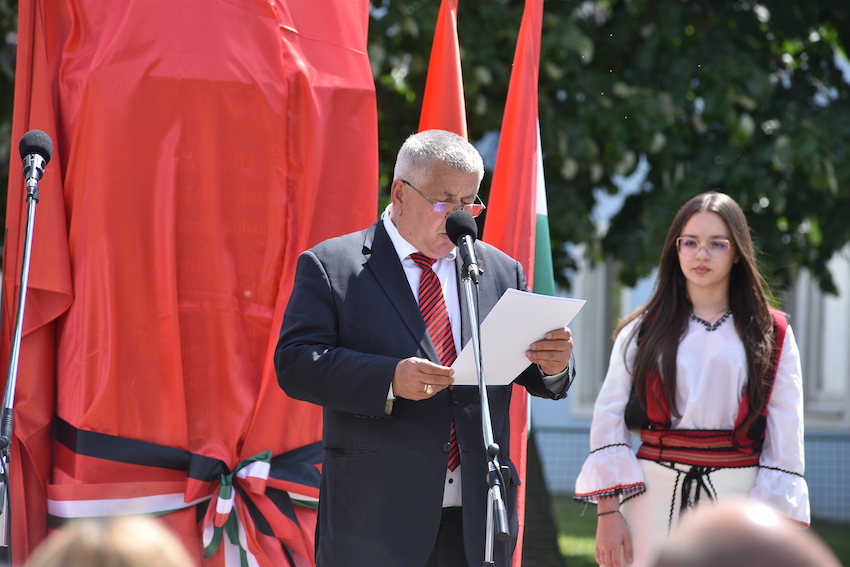
Finally, I would like to express my heartfelt thanks to the Foreign Ministries of Albania and Hungary, the Embassy of the Republic of Albania and the Chargé d’Affaires, Mr. Genti Bendo, the municipality of Eger, the esteemed citizens of this beautiful and friendly city, and also the members of the Albanian diaspora in Hungary. My special thanks also go to the employees of my company, particularly Hafuzi Hajnalka Avnijéta and Edit Kovács, whose dedication has been instrumental in bringing this vision to fruition. Lastly, I pay tribute to the talented sculptors: the late Agim Rada (24 May 1953 – 11 July 2023) and Julian Mucsollari for their remarkable craftsmanship and dedication to preserving Skanderbeg’s legacy. Thank you for your attention!”
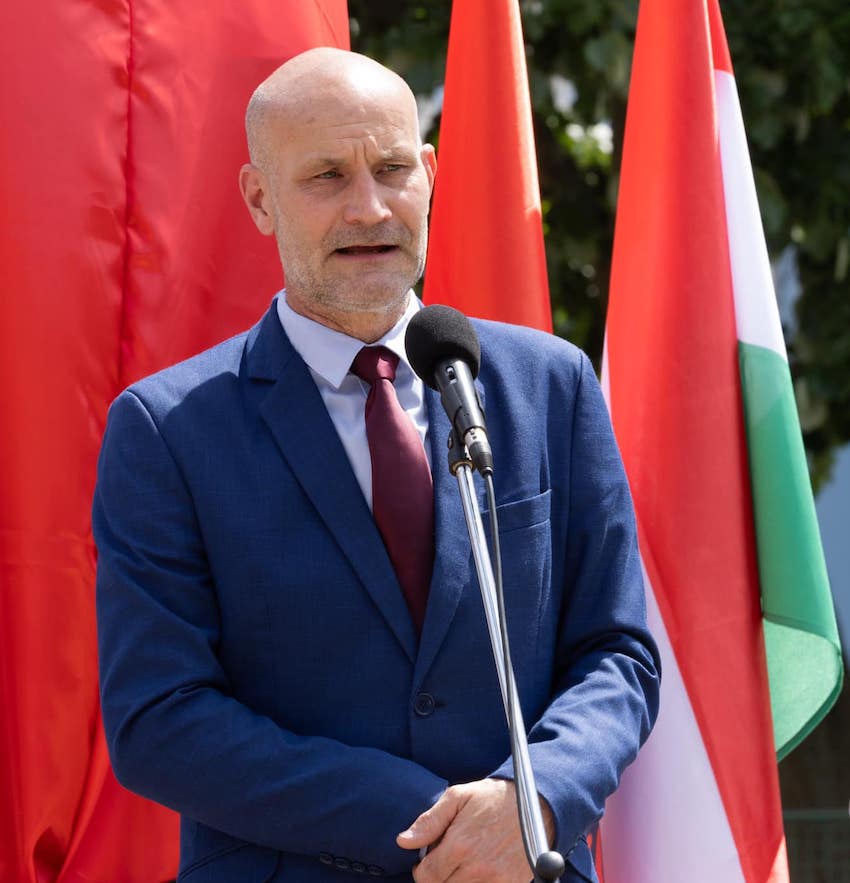
In his speech, the Deputy Mayor of Eger, Mr. Gábor Minczér expressed appreciation for this remarkable initiative of the Honorary Consul, highlighting the historic significance of Skanderbeg Square and the ongoing endeavours to further enhance its beauty and historical resonance. He emphasized the symbolic significance of the solemn occasion, which marked the culmination of years of effort, with the statue serving as a focal point.
The unveiling of the bust of Skanderbeg is proof of the enduring connection between the two nations. This monument, made possible through the efforts of Honorary Consul Avnija Hafuzi, commemorates the shared history dating back to the 15th century and the importance of nurturing and preserving this relationship for future generations.
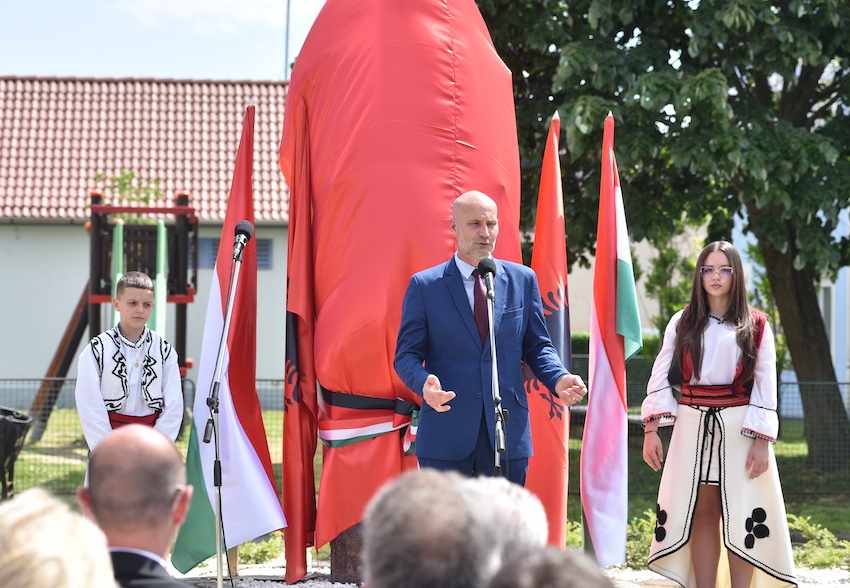
An important chapter in the history of Eger:
When talking about Eger, one cannot overlook the pivotal year of 1552, a defining moment in its history. During the siege of Eger, in the face of overwhelming odds, a handful of Eger warriors triumphed over a huge Turkish army.
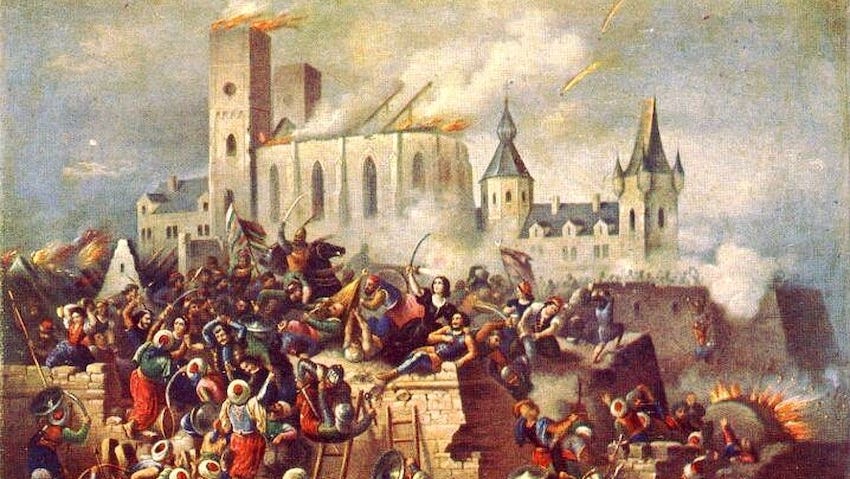
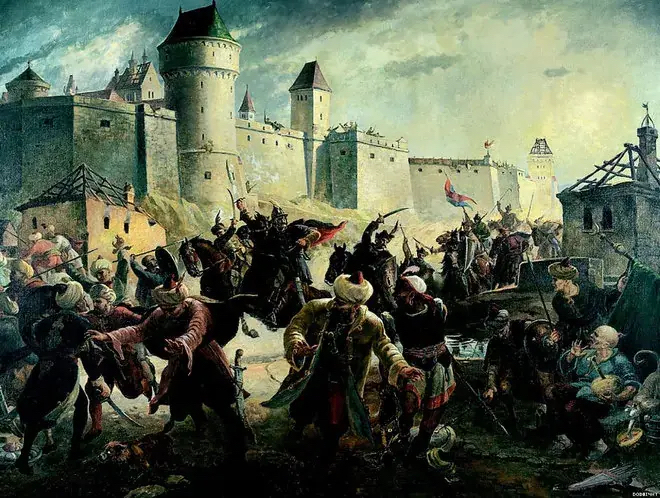

From the ranks emerged countless unsung heroes, whose courage and resourcefulness embodied the spirit of the city. Among them were ordinary peasants, craftsmen and women from Eger who fearlessly scaled the fortress walls, armed only with stones, hot water and boiling tar to repel the invaders. Under the unwavering leadership of the indomitable Captain István Dobó, they defended their homeland with unyielding determination. It was a triumph of the Hungarian heart over the Ottoman crescent.
Their valiant efforts made Eger a symbol of bravery and patriotism in Hungarian history. As the Hungarian writer Géza Gárdonyi eloquently expressed in his poignant novel The Stars of Eger: “The true strength of the fortress walls lay not in the solidity of its stones, but in the resilience and indomitable spirit of its defenders”, immortalizing their legacy for generations to come. It was not until 1596 that the Ottomans were able to conquer this legendary border fortress in the town of Eger.
Albanian Guests’ Remarks:
After the two main speakers, Albanian Guests of Honour were invited to deliver their speeches: Mr. Genti Bendo, Chargé d’Affaires of the Albanian Embassy in Hungary, Professor Abdurrahman Zulfiu, former history teacher at Skanderbeg High School in Preševo, Professor Dr. Flamur Gashi, Albanian diplomat and Dr. Dasnim Hebibi from Preševo, Doctor of Political Science.
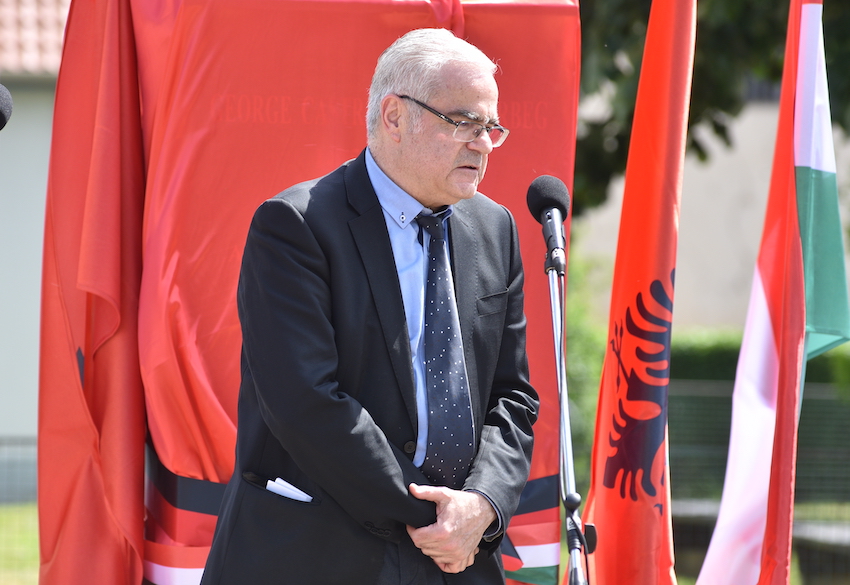
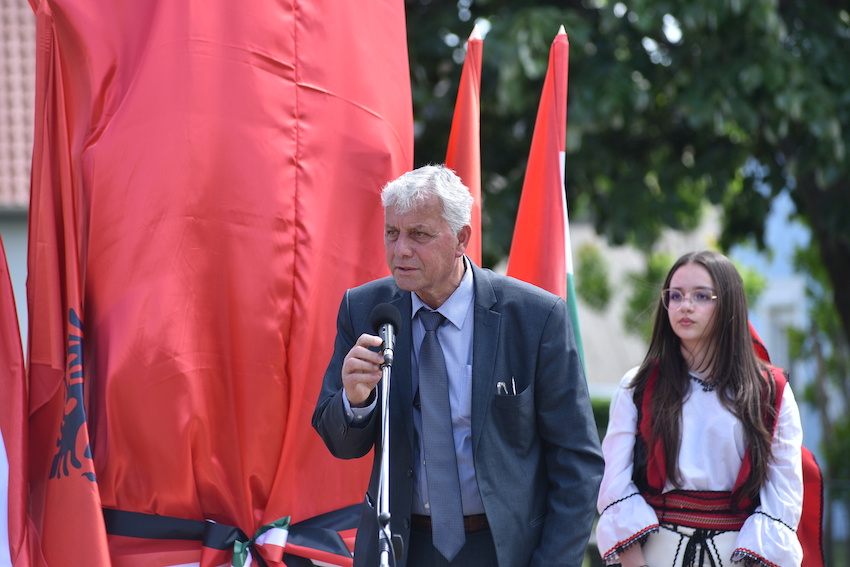
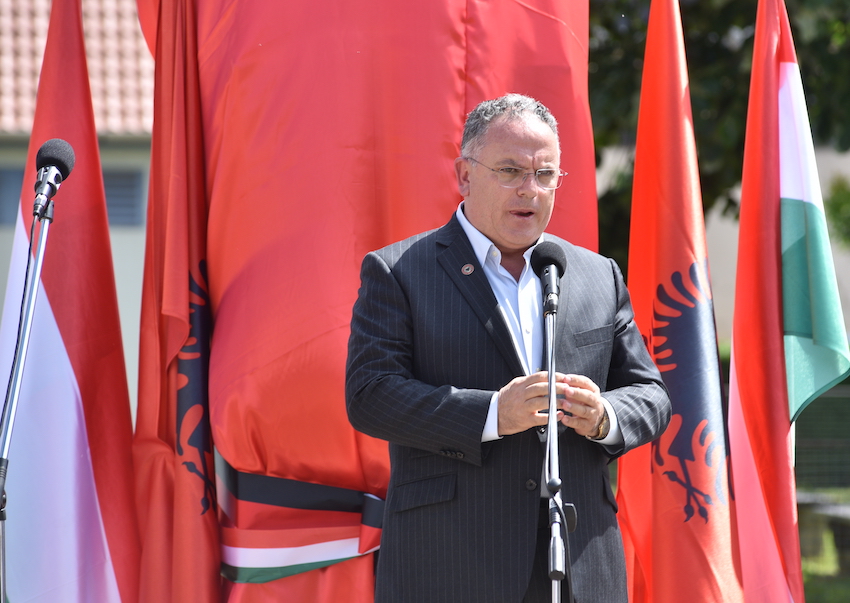
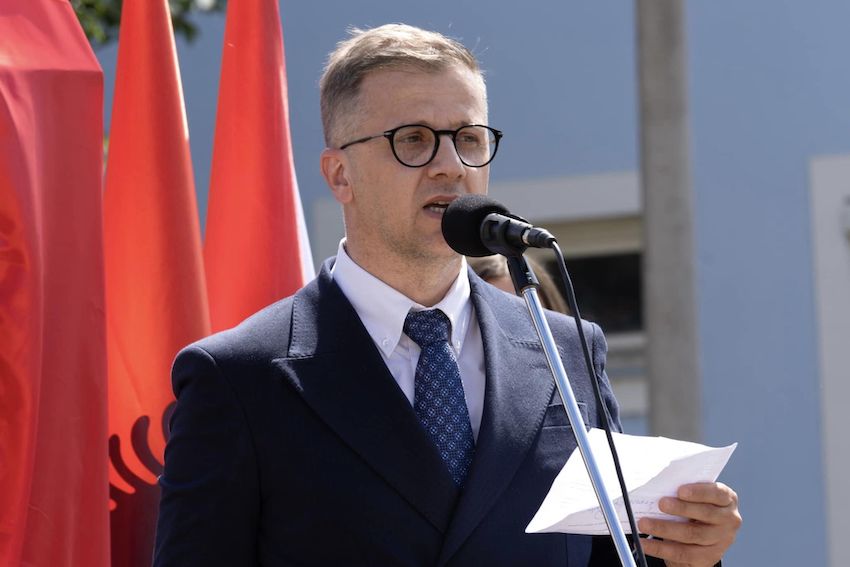
Unveiling the Statue:
Following the remarks, the proceedings moved on to the most important moment of the solemn event, the unveiling of the Skanderbeg bronze bust by Honorary Consul Avnija Hafuzi, Chargé d’Affaires Genti Bendo, Deputy Mayor Gábor Minczér, and Deputy Mayor Attila Farkas, on behalf of the Municipality of Eger.






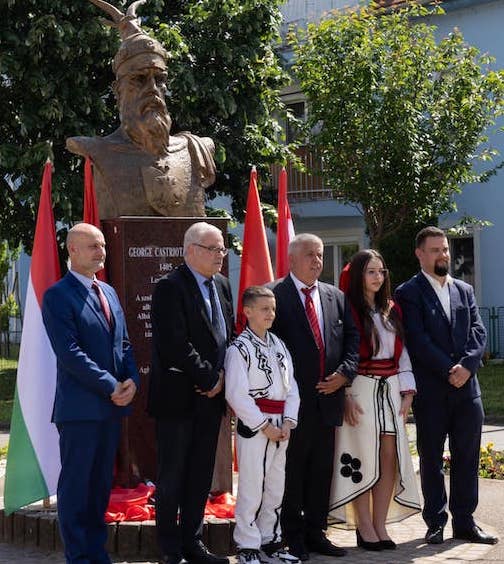
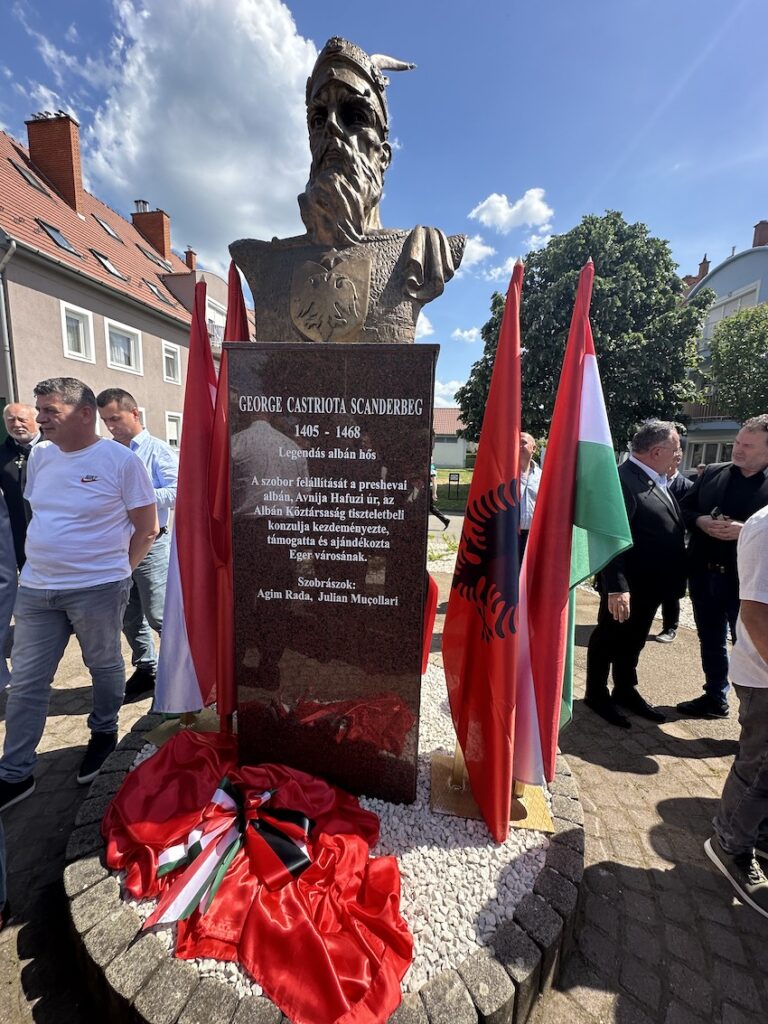
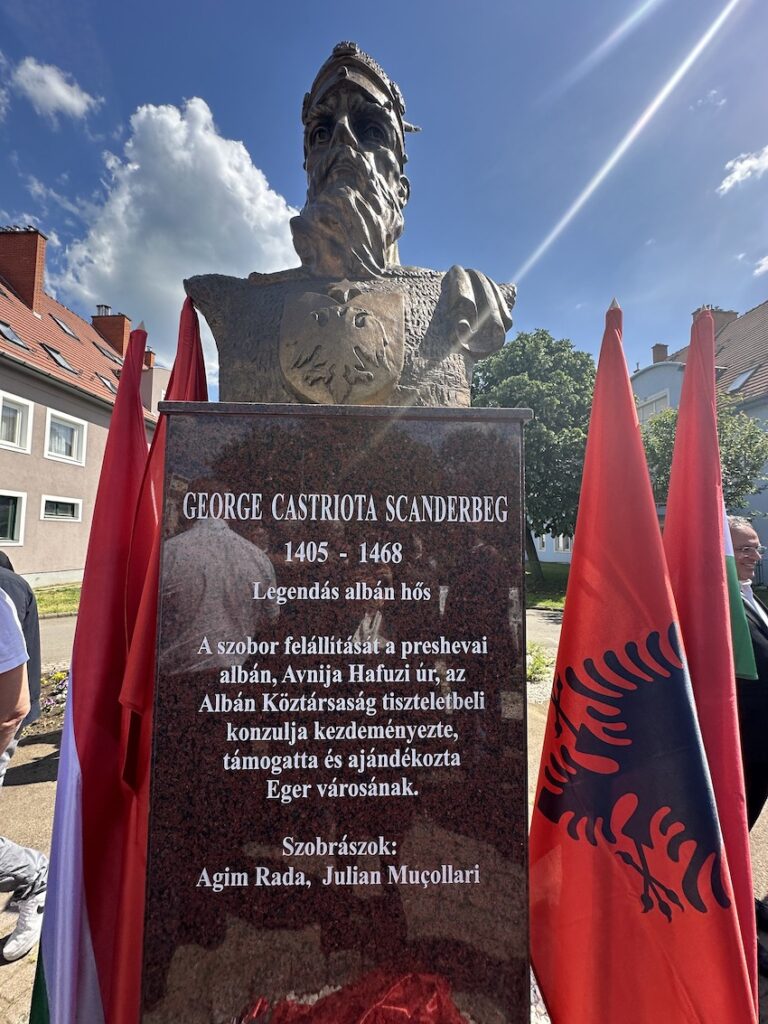
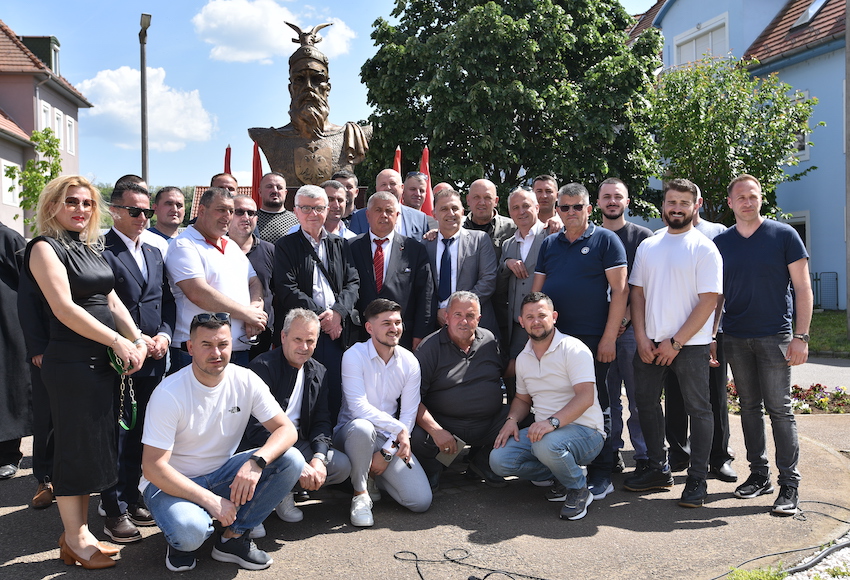
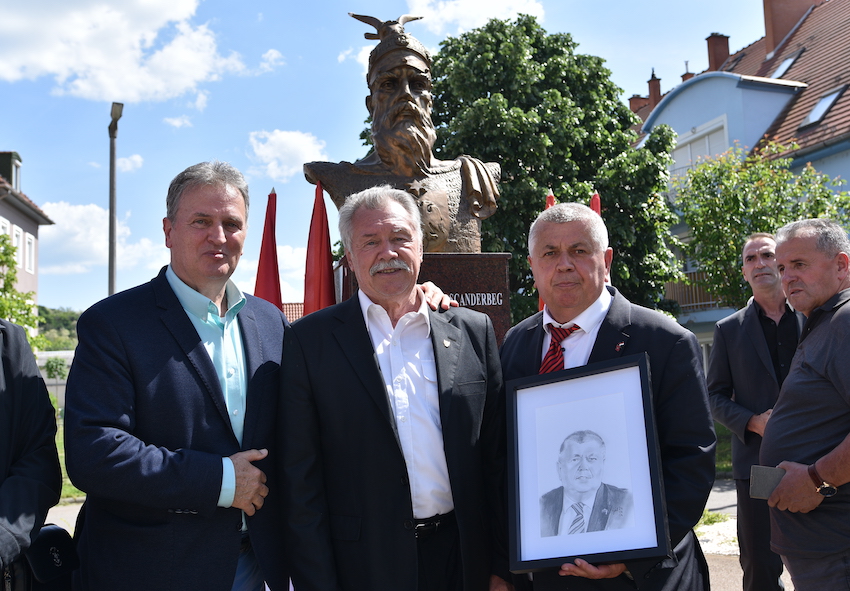
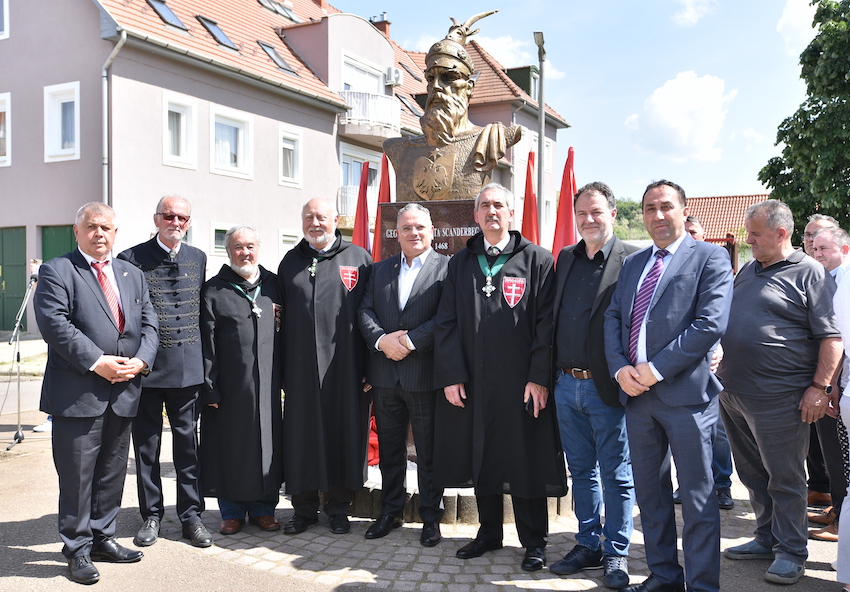
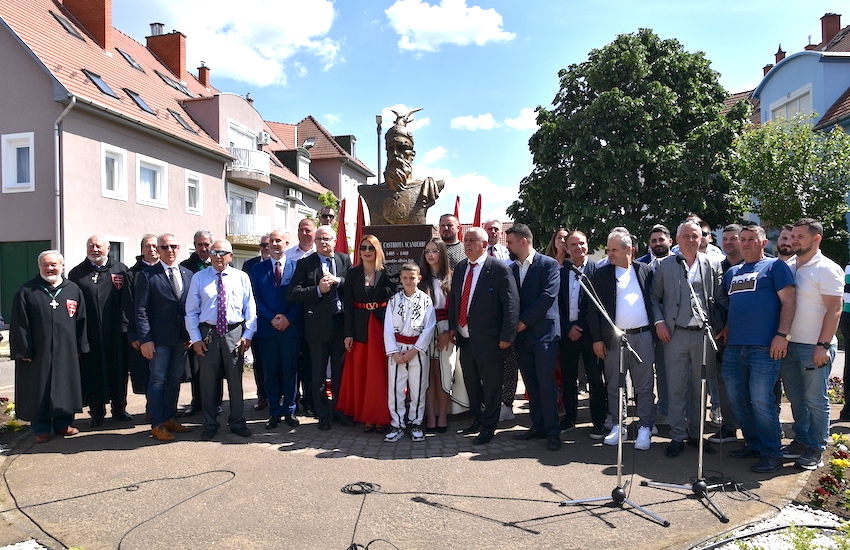
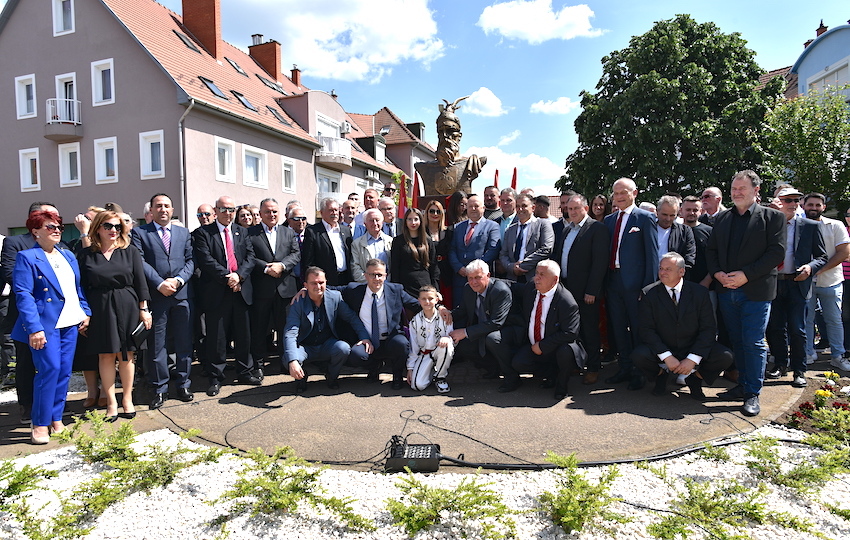
The official ceremony was followed by a reception at the City Hall of Eger in the presence of the officials and international guests.
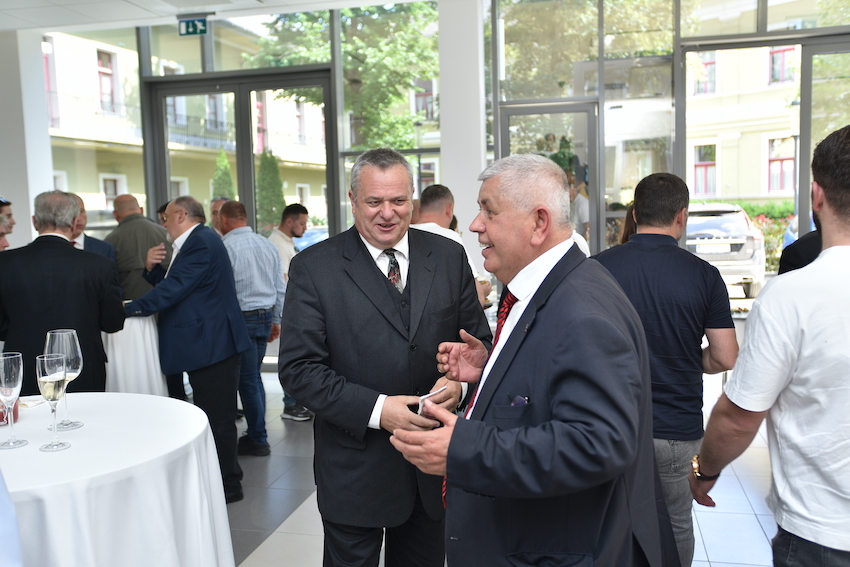

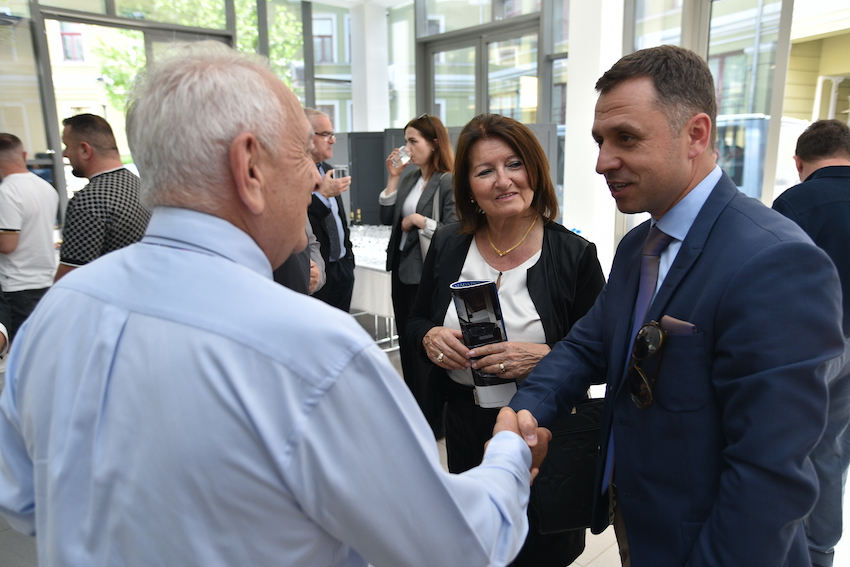
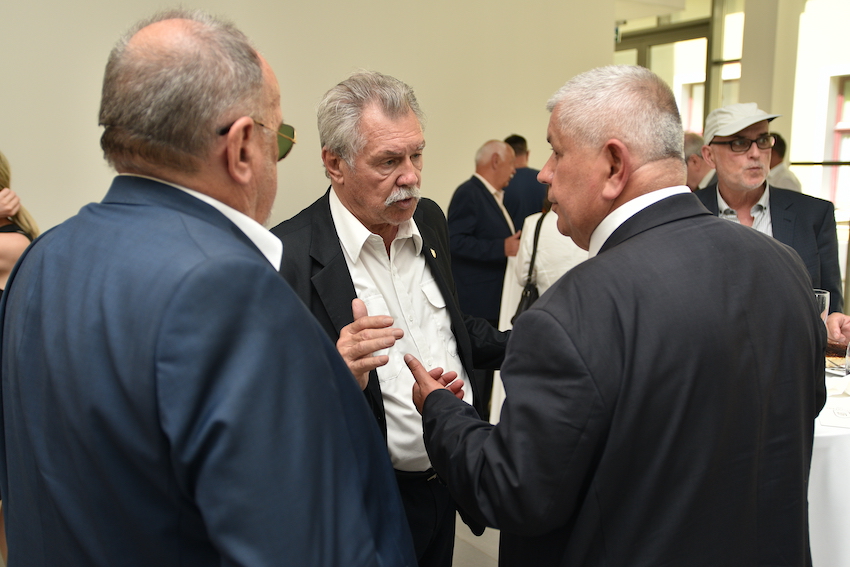
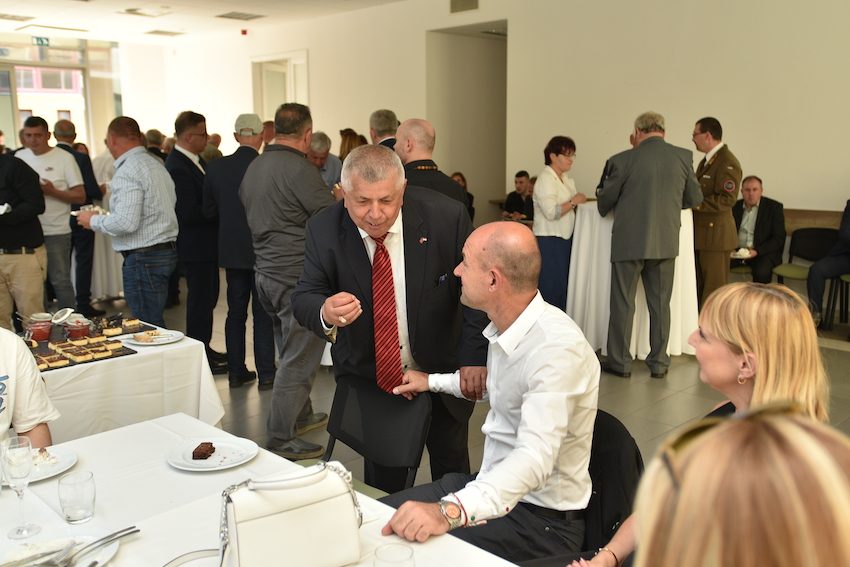

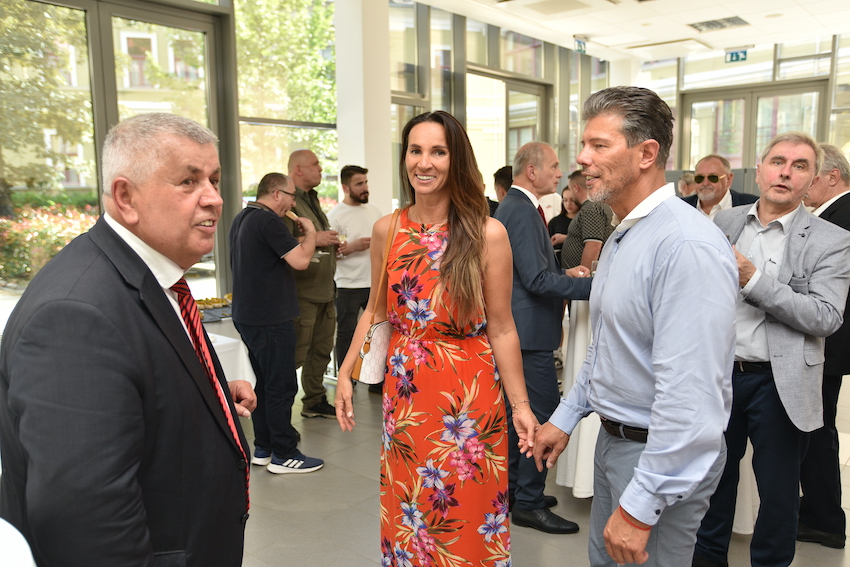
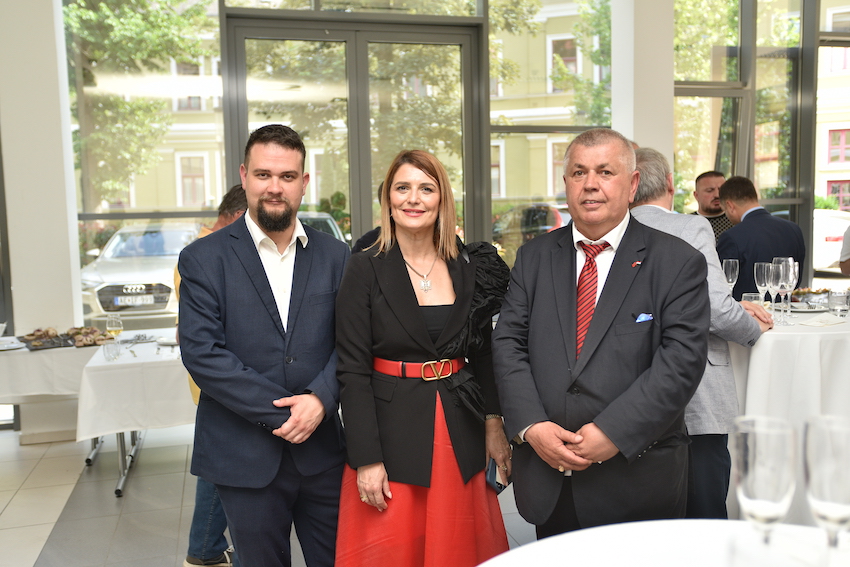
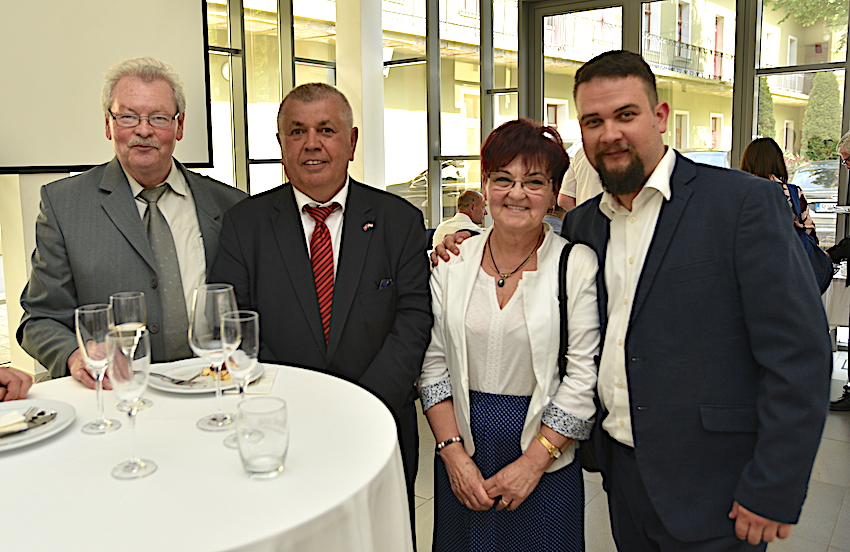
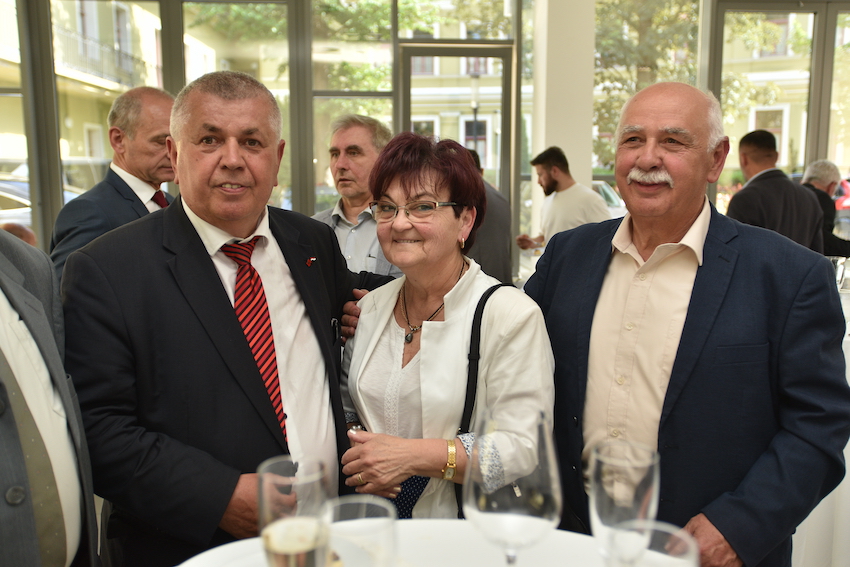
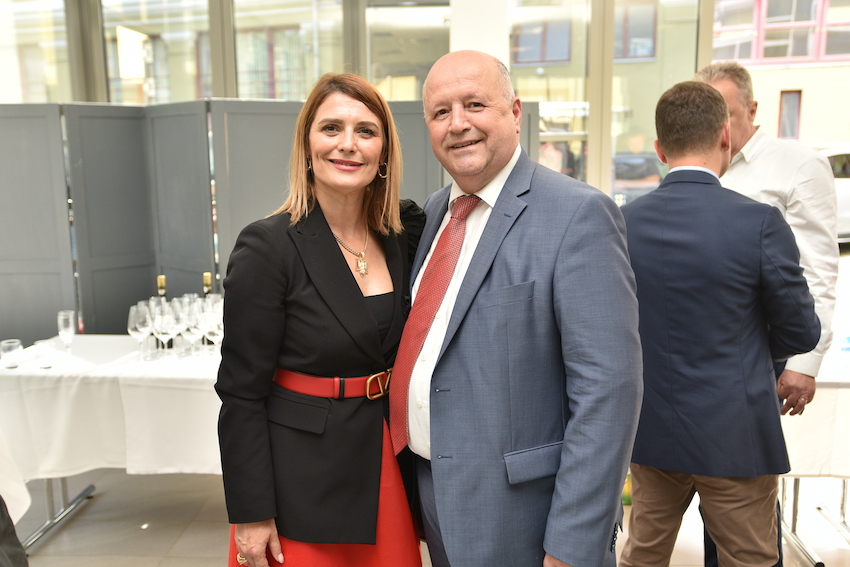
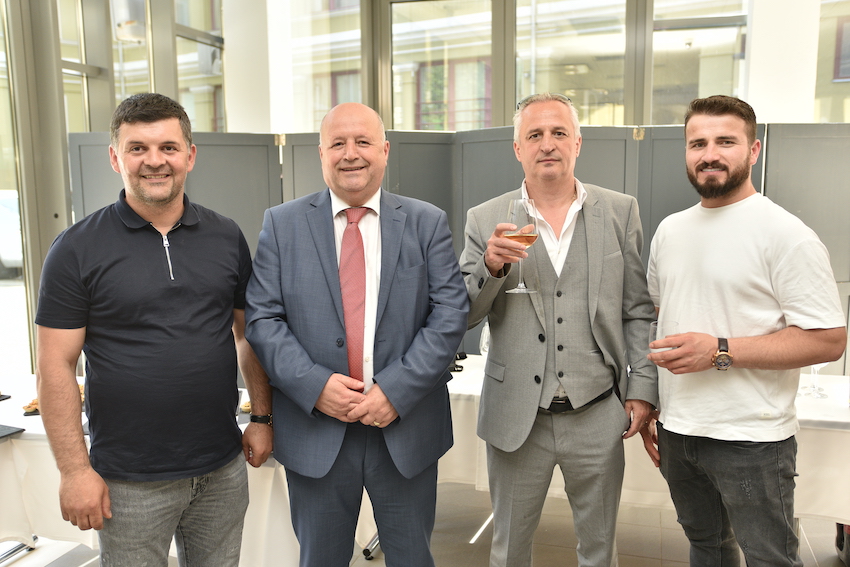
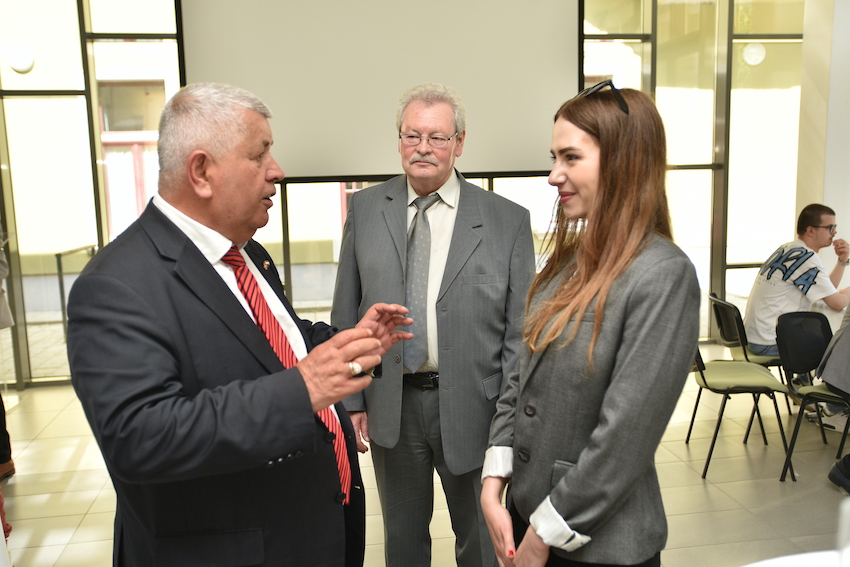

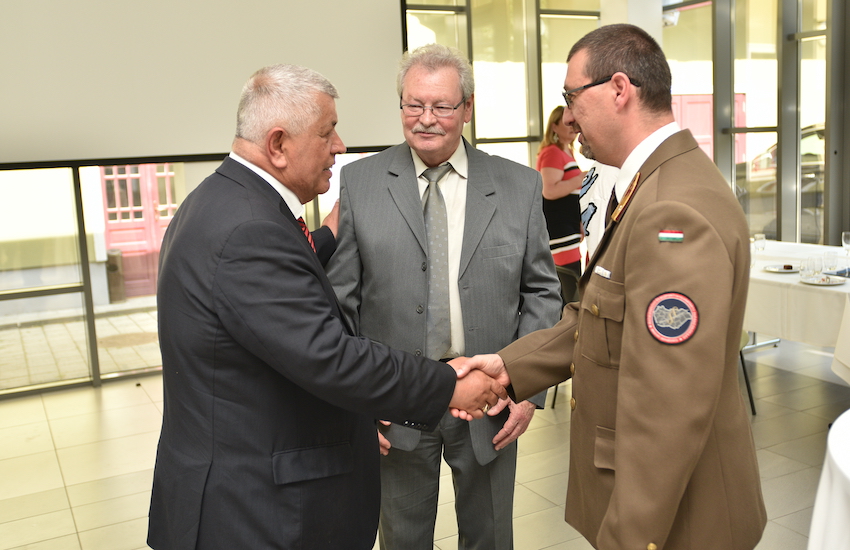
Honouring the Memory of Skanderbeg:
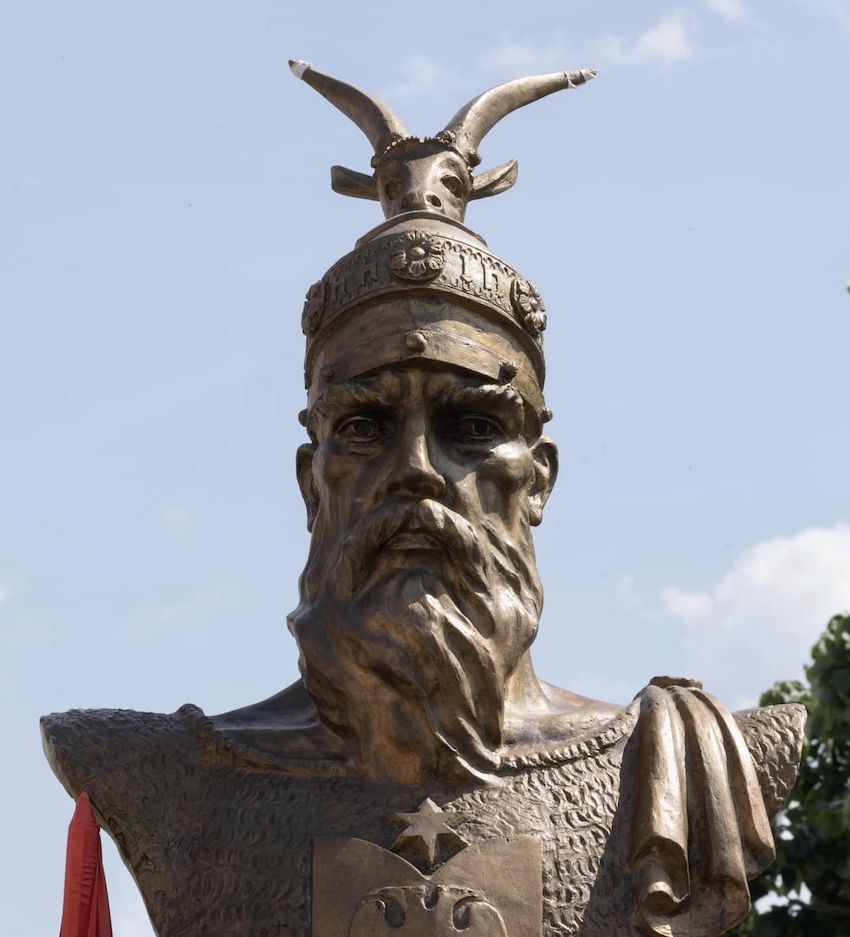
The head of Skanderbeg’s statue is adorned with his distinctive helmet depicting a goat’s head. It is a common animal in Albania that represents bravery, strength, agility and the ability to navigate steep and rugged terrains. This symbol stands for independence and freedom in Albanian culture.
The authentic weapons of Skanderbeg, which played a historic role and were the subjects of mythical adoration, becoming a kind of relics, are preserved abroad.
His iconic helmet and two swords with scabbards are among the most prominent objects in the Imperial Armoury of the Kunsthistorisches Museum in Vienna. These items have been kept there since the late 16th century, and were assembled by Ferdinand II, Archduke of Austria. The prayer book of Skanderbeg is archived at the Shelley Publishing House in Chelsea, London, UK.
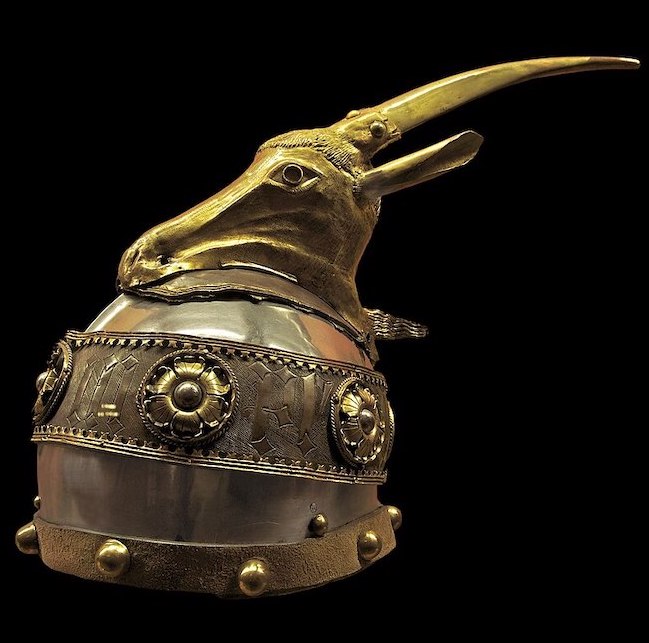
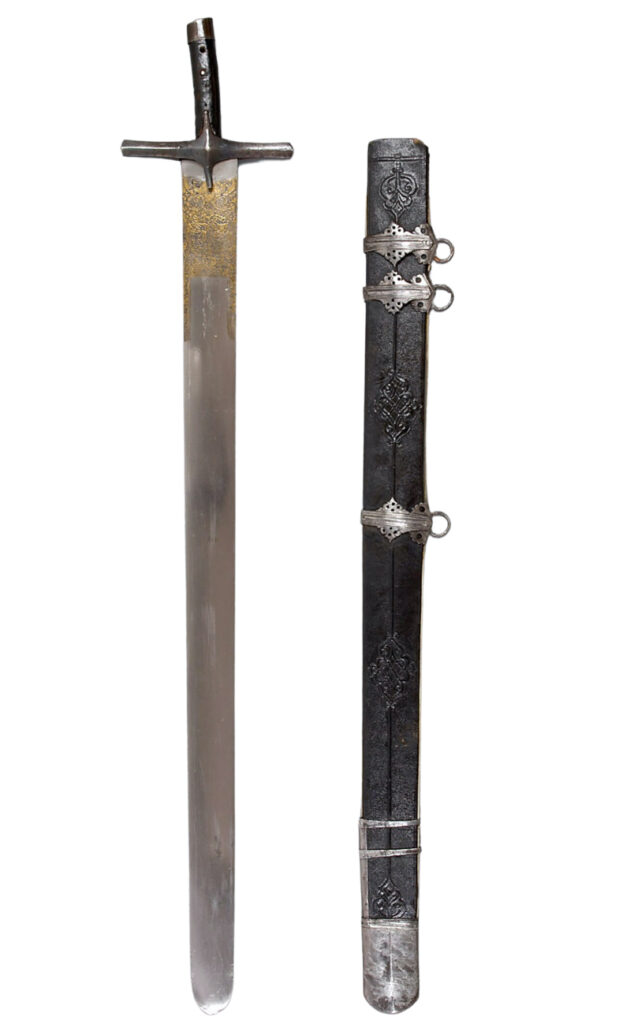
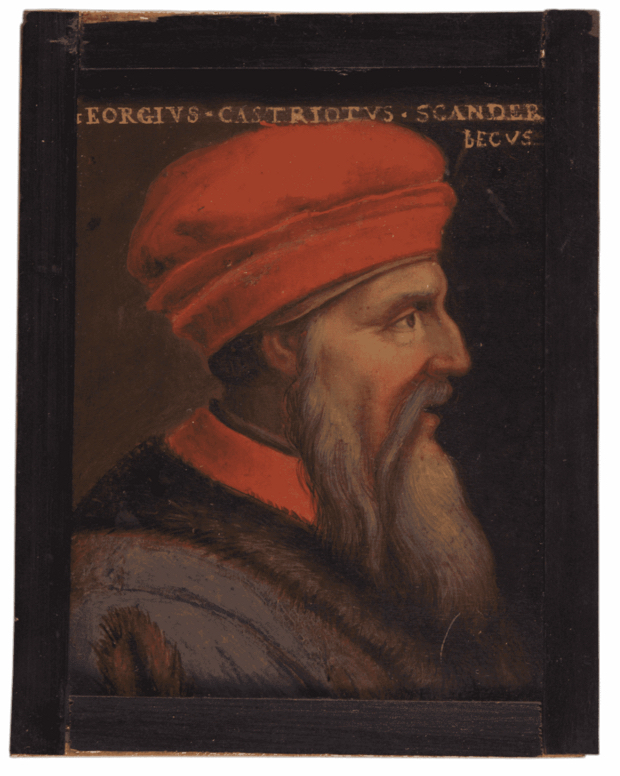
When Skanderbeg died of malaria in 1468 at the age of 63, he was buried in the Cathedral of Saint Nicholas in Lezhë, a major venue of his activities. To honour the legacy of the national hero and Father of the Albanian nation and to keep him alive in the common memory, a Skanderbeg Memorial was established in Lezhë in 1981. This significant historic site spans 225 square meters and encompasses the remains of the 14th-century St. Nicholas Cathedral. This grandiose monument, supported by marble pillars, with its walls adorned with 25 swords and bronze shields, depicts the battles of the great military leader. At the centre of the monument, a symbolic tomb was placed, covered with a marble plaque and replicas of Skanderbeg’s helmet and sword, which are modelled on the original artifacts.
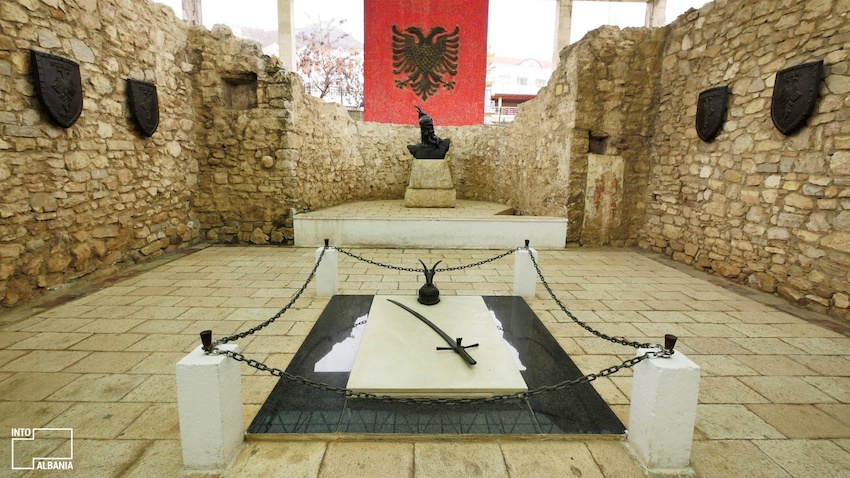
The city of Tirana boasts an impressive equestrian statue of Skanderbeg, prominently overlooking the main square of the Albanian capital. This 11 metres (36ft) high monument was inaugurated in 1968 to commemorate the 500th anniversary of Skanderbeg’s death.
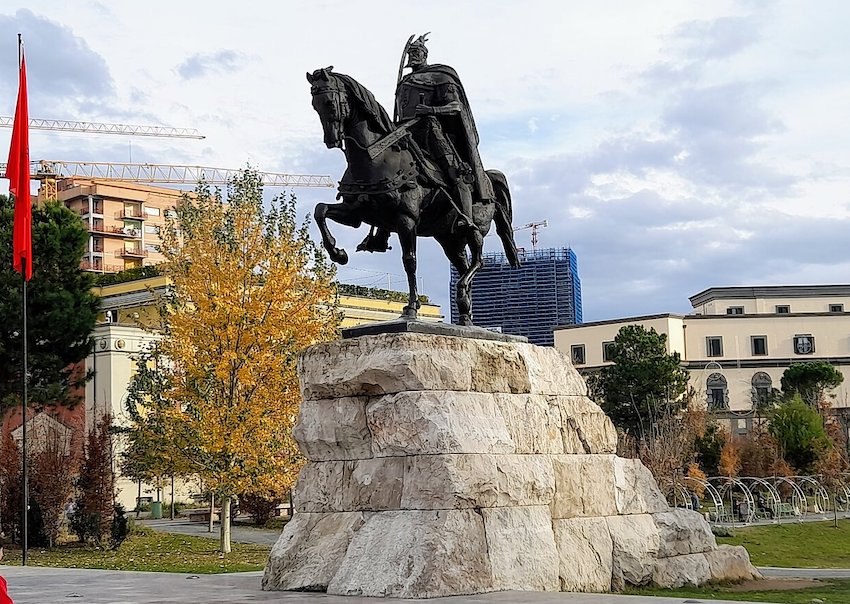
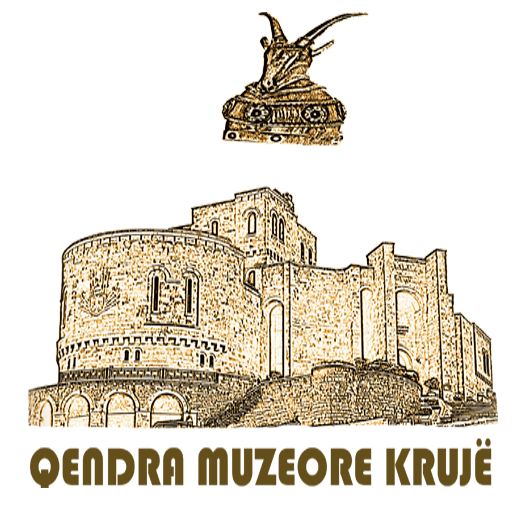
The National Museum George Castriota Skanderbeg, located in Krujë Fortress, Skanderbeg’s birthplace, is one of the country’s main attractions. It was inaugurated in 1982 and is considered one of the most important and most visited museums in Albania. Built in the 5th – 6th centuries, this massive fortress above the town of Krujë remarkably withstood three major Ottoman sieges in 1450, 1466 and 1467, with its garrisons numbering no more than 2,000-3,000 men.
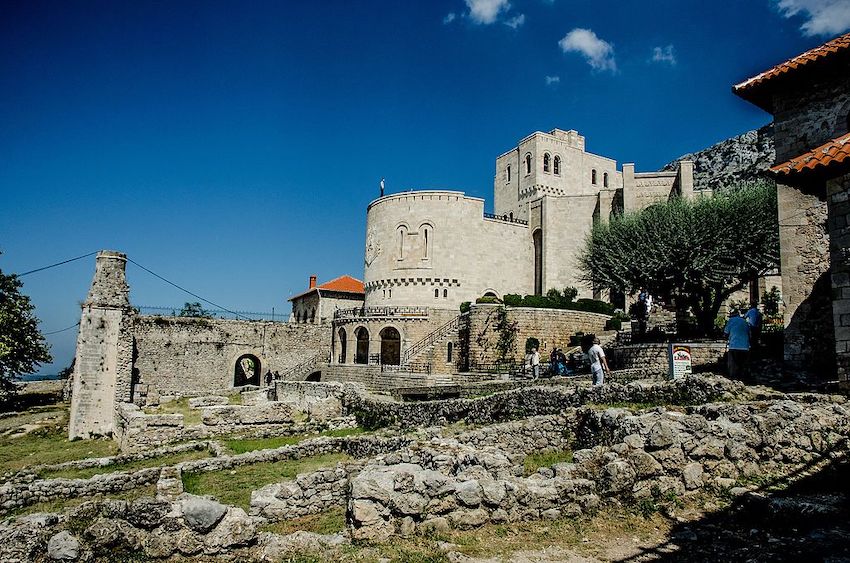
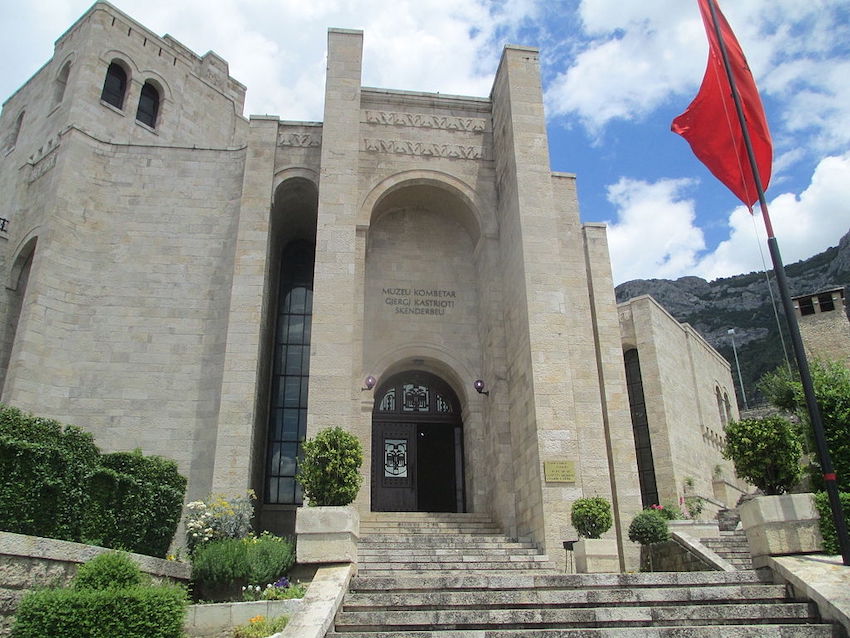
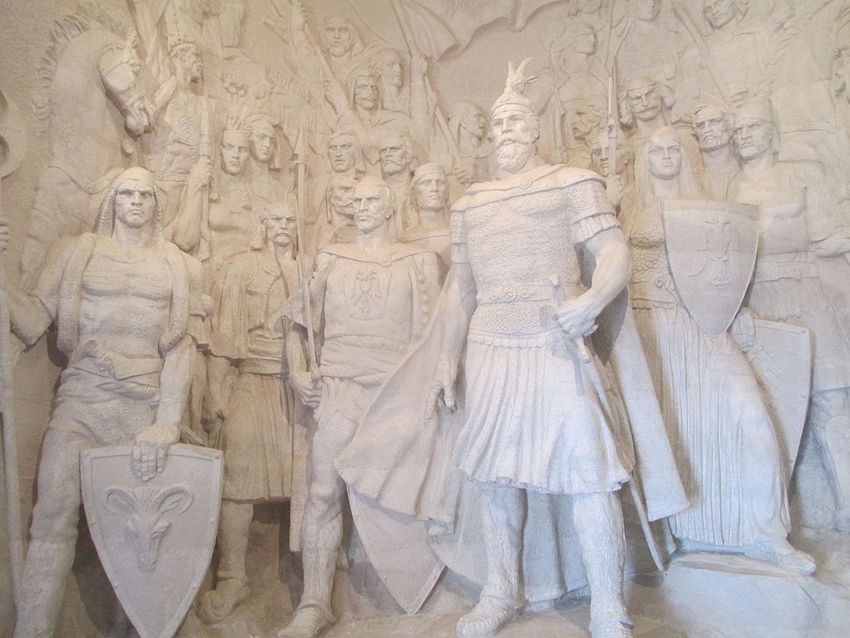
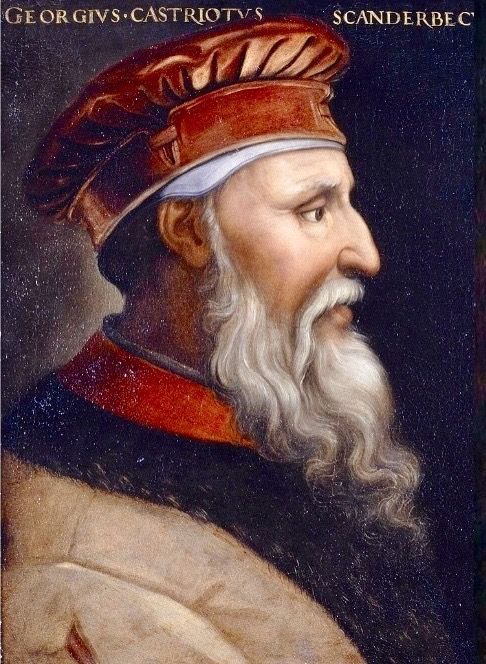
Several decades after the death of Gjergj Kastrioti – Skanderbeg, the greatest personality in Albanian history, an inspiring portrait of him was created by the Italian artist Cristofano dell’Altissimo (1525-1605). This magnificent piece of fine art, showcasing Skanderbeg’s enduring legacy, is kept in the Uffizi Gallery in Florence.
Another portrait by an Italian painter from the late Renaissance, depicting Skanderbeg, is part of the Portrait Gallery in the Kunsthistorisches Museum in Vienna, Austria.
Source: Honorary Consul of Albania in Hungary
Photos by the Honorary Consul of Albania in Hungary, Wikipedia, Kunsthistorisches Museum Vienna, Skanderbeg Museum, and DPA

